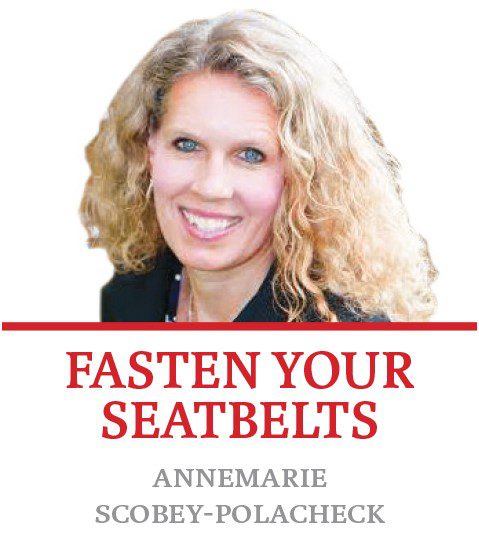Fasten Your Seatbelts
“When Jesus saw his mother and the disciple there whom he loved, he said to his mother, ‘Woman, behold, your son.’ Then he said to the disciple, ‘Behold, your mother.’” (John 19:25-26)
During Christmas of 1994, I was seven months pregnant with our first child, Jacob. It was the first time I thought of Mary as a peer, rather than as a faraway, kindly queen of all saints. As my ankles swelled, and my belly grew, that trip on the donkey to Bethlehem looked rougher; the straw in the stable felt less comfortable, and the legend of the drummer boy appearing moments after the savior’s birth moved from charming to exhausting. “Rah, pum, pum, pum, pum.” No thank you; just a silent night, please, so I can rest.
From when Jesus was born to when he started his ministry at around age 30, we do not hear about the relationship between him and his parents, except for that famous trip back from Jerusalem to Nazareth when he was 12 and his parents lost track of him for a few days. (Sigh. Pre-teens.) Scholars call these the “hidden years.” I roll my eyes at this. Any mother knows that parenting is a public endeavor, rarely hidden. The eyes of the community are on every mother as she makes her way through child-rearing — sometimes watching, ready to lend a hand, and sometimes judging, ready to let her know how she could do better. Mary undoubtedly had Jesus on her hip as she shopped in the market; she likely took turns with other moms looking after the children in the village. Jesus as a young man was likely known in his town as a carpenter, working with Joseph.
Jesus’ first public miracle was the wedding at Cana, when he turned the water into wine. And Mary was the one who directed him to do it, who knew he could do it. “They have no more wine,” she said to him. I imagine Mary raising her eyebrows and giving Jesus a slight nod. Jesus replied back to his mother, “Woman, why do you involve me? My hour has not yet come.” Mary simply ignored him, as one must, sometimes, with young adult children who think they have all the answers, and said to the servants, “Do whatever he tells you.” Mary, as a mother, had seen in Jesus something privately that she knew he needed to take public.
Perhaps if women had written Gospels, someone would have thought to investigate exactly how Mary knew of Jesus’ gifts as she sat with him at the table at Cana, not after the water changed to wine, like the rest of us. What had been happening at home, in Nazareth, that she could speak with such confidence? How did she know that this moment at the wedding was his time? How many other moments had she held her tongue because she knew her son was not quite ready to show his divinity? And despite Jesus’ initial protest, what was it about Mary’s insistence that allowed him to overcome his hesitancy? How did he know that she was right?
All of this speaks to the mother-child relationship during the not-so-hidden years. Mothering, at its best, is working together with your child to find the divine within that child and tug it out. Mothering is a lifetime challenge of learning when to hold something in your heart and when to nudge goodness into being. Mothering is seeing the blurry space between guidance and control and staying on the side of guidance. And what I am now learning is mothering doesn’t end with the cessation of childhood. In mothering grown children, we wade towards them through a thousand moments of love, teaching and help; we wade through the times of frustration and worry and tears. We wade through our shared past so as to be near our children in this next adult stage, in case we have the opportunity to whisper what they may be called to, and hope they have the grace to listen.
Mary’s understanding of Jesus’ call led eventually to the cross. I cannot begin to imagine her pain of seeing her son there dying, so publicly. Mary, the mom, at the foot of the cross, choosing to trust her son to understand his call, even as he bled, even as he struggled to breathe. Mary, understanding enough about Jesus’ divinity to know that this was not the time to ask for the miracle — trusting Jesus that the suffering was necessary, the death was necessary. Mary, not speaking, silently weeping, yet working with Jesus, until the end that was not at all the end.
And then, just minutes before he died, Jesus spoke: “Woman, behold your son.” And to the disciple, “Behold your mother.”
Jesus, using seven of his final 12 words to care for his mother. Jesus, honoring his mother. Protecting her. Loving her.
Jesus, on the cross, feeling the thousand moments of his lifelong relationship with his mother. The scratch of the hay from that first night in the manger, the sounds and smells of the marketplace of his youth, the hours of cutting and sanding the wood, the nod at Cana. And then, the loaves and fishes; the storm at sea; the Mount of Olives. All there on the cross. And his mom, with him through it all.
Behold.

